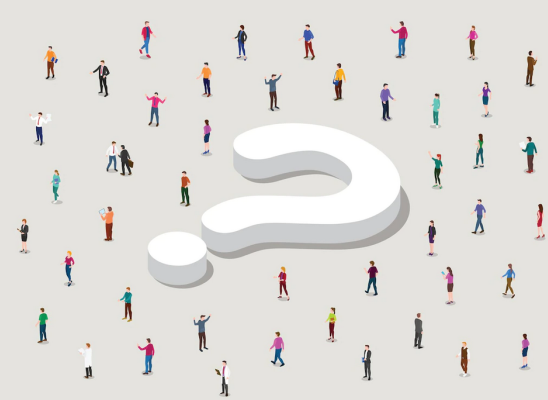Untroubled Hair Pullers: Another Side of Hair Pulling

Online test
Find out the severity of your symptoms with this free online test
Trichotillomania (TTM) is an obsessive-compulsive related disorder characterized by compulsive hair pulling resulting in hair loss and significant impairment in social, occupational, or other important areas of functioning not attributable to another medical or psychological disorder. TTM affects an estimated 0.6% to 4.0% of the world’s population and about 1% of the U.S. population. It’s more than just a “bad habit” or a fidget. Chronic hair pulling usually becomes a clinical concern only when symptoms significant create distress and impairment in functioning.
However, it might surprise you to know that while all TTM involves chronic hair pulling, not all hair pulling meets the criteria for TTM.
Diagnostic criteria for a diagnosis of TTM includes:
- Recurrent pulling out of one’s hair, resulting in hair loss
- Repeated attempts to decrease or stop hair pulling
- Clinically significant distress or impairment in social, occupational, or other important areas of functioning
- The hair pulling cannot be better explained by the symptoms of another mental disorder (e.g., attempts to improve a perceived defect or flaw in appearance, such as may be observed in body dysmorphic disorder).
- The hair pulling or hair loss cannot be attributed to another medical condition (e.g., a dermatological condition).
Research has found that some people engage in hair pulling and, while they experience some distress, it is at a level considered sub-clinical and does not meet the criteria for TTM. Like those that meet criteria for TTM, while they find their distress bothersome, some seek treatment while others do not.
Interestingly, there is a subset of people who engage in chronic hair pulling who do not seem to experience clinically significant symptoms and are seemingly unbothered by their pulling behaviors. They may meet some of the criteria for a diagnosis of TTM but specifically lack the necessary degree of distress or impairment in functioning. Why do they not experience distress or impairment? Are there differences between these untroubled hair pullers and those who experience more distress and impairment? What can we learn from them about TTM? A new study compares untroubled hair pullers and people diagnosed with TTM to take a closer look at how why they differ.
The Dimensions of TTM vs. Untroubled Pulling
Prior studies have examined differences between people with clinical and subclinical TTM symptoms. This is the first known study that has sought to understand the differences between people diagnosed with TTM and untroubled pullers.
For this study, lack of distress or impairment was the defining criteria for the untroubled hair pullers. A clinical diagnosis of TTM was required for the comparison group.
The study looked at the characteristics of the two groups along several dimensions of hair pulling to examine possible differences between the groups:
- TTM symptoms
- demographics
- interpersonal functioning
- personality and intrapersonal functioning
The findings of the study describe the untroubled puller. Not unexpectedly, untroubled hair pullers reported considerably less distress and disability due to their hair pulling than the diagnosed group.
On measure of symptomatology:
- Untroubled pullers reported mild severity of pulling and less focused-type behaviors. They were less likely to be aware of their pulling.
- Untroubled hair pullers were less likely to pull in response to sensory stimuli.
- Untroubled hair pullers were less likely to report feeling worse after pulling and less likely to engage in self-evaluative thinking (e.g., self-judgment, criticism)
- They were less likely to engage in ritualistic pulling.
On measures of interpersonal and intrapersonal functioning:
- Untroubled pullers reported less social anxiety and perceived less risk with intimacy suggesting that they are less likely to avoid relationships due to their hair pulling.
- Both groups reported similar levels of satisfaction with their romantic relationships.
- There were no significant differences between the groups on the Big Five personality dimensions (i.e., openness, conscientiousness, extroversion, agreeableness, neuroticism) or perceived social support. This finding was interesting as TTM has previously been associated with higher neuroticism.
- Untroubled pullers demonstrated lower levels of perfectionism, concern over mistakes or doubting their actions.
On measures of demographics:
- The two groups were similar in demographics.
- Participants were primarily white, non-Hispanic women.
- Untroubled pullers were more likely to be white, non-Hispanic females in their 20s and 30s, and college-educated.
The untroubled puller experiences less distress and impairment from their hair pulling. They report less concern about mistakes and doubts about behavior suggesting that they are more accepting of their pulling and ascribe less negative meaning to it. Lack of impairment may be related to less attention to the pulling and fewer negative emotions associated with it.
Implications for Treatment
These findings have significant implications for treatment for both untroubled pullers and those with clinically significant TTM symptoms. The results provide a profile of a group of people who pull that may be overlooked. The untroubled hair puller, while clearly engaging in chronic hair pulling, tends to be less distressed and experience less impairment than someone with clinical or even subclinical symptoms. As a result, they may present for help, maybe for another issue, but their pulling behavior may be overlooked or minimized due to lack of obvious distress.
The findings also provide insight into the dynamics of those who are diagnosed with TTM and how that information can guide treatment.
It’s not uncommon for people with one issue to seek help for another. Clinicians base their diagnostic assessments on what their client reports and what the most common disorders are within that set of symptoms. People with subclinical symptoms or untroubled pullers may not describe symptoms in a way that immediately indicates an issue with hair pulling. Understanding the differences in how people think about their hair pulling can aid in making an accurate clinical assessment of a person’s needs.
The researcher suggests that clinicians may wish to focus on the antecedents related to sensory experiences or the consequences of negative thinking as these seem to be more related to levels of distress. Beyond focusing on the pulling behavior, consider the person’s views on topics such as relationships and intimacy, social anxiety, how mistakes are handled, and how they affect their hair-pulling behaviors. Those insights can help to understand their unique experience and guide treatment.
If untroubled pullers are less bothered by their symptoms because they pay less attention to them and ascribe less negative emotion to them as the study suggests, is it possible that those are skills that can be learned? Of course, more research is needed but understanding the many ways hair pulling can manifest brings researchers one step closer to finding innovative and individualized treatments for TTM.
References
1. American Psychiatric Association. (2013). Diagnostic and statistical manual of mental disorders (5th ed.). https://doi.org/10.1176/appi.books.9780890425596
2. Houghton, D. C., Alexander, J. R., Bauer, C. C., & Woods, D. W. (2018). Body-focused repetitive behaviors: More prevalent than once thought? Psychiatry Research, 270, 389-393. https://doi.org/10.1016/j.psychres.2018.10.002
3. Flannery, M. K. (2021). Untroubled Pullers: An Examination of Individuals with Nonclinical, Chronic Hair Pulling [Unpublished master's thesis]. American University. https://www.proquest.com/openview/8e056d4eb4c891272ab15ac1a52304ad/1?pq-origsite=gscholar&cbl=18750&diss=y
Online test
Find out the severity of your symptoms with this free online test
Start your journey with TrichStop
Take control of your life and find freedom from hair pulling through professional therapy and evidence-based behavioral techniques.
Start Now



